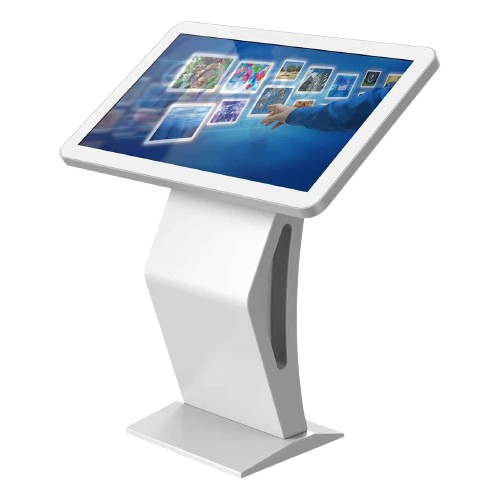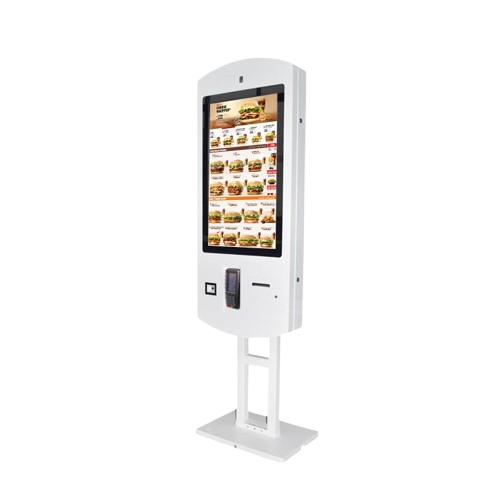Self Ordering kiosk

by Sonam
September 16 2024
Self-Ordering Kiosks are Modern Solution for Efficiency and Convenience
Self-ordering kiosks are becoming increasingly common in various settings, from restaurants and cafes to retail stores and airports. These digital terminals offer a way for customers to place orders and make purchases without needing assistance from staff. Let’s explore what self-ordering kiosks are, how they work, and the benefits they bring to both businesses and customers.
What is a Self-Ordering Kiosk?
A self-ordering kiosk is a touch-screen device that allows customers to place orders and make payments on their own. These kiosks are typically equipped with an easy-to-use interface where users can select items, customize their orders, and complete transactions. They are designed to streamline the ordering process and improve the overall customer experience.
How Do Self-Ordering Kiosks Work?
Self-ordering kiosks operate by providing a digital interface that customers interact with directly. When a customer approaches the kiosk, they use the touch screen to navigate through a menu or catalog of available products. The interface often includes options to customize orders, view detailed product information, and add items to a cart.
Once the customer has made their selections, they proceed to payment, which can usually be done through various methods such as credit/debit cards, mobile payments, or even cash in some cases. After payment is completed, the kiosk provides a receipt or order confirmation, and the customer can either wait for their order to be prepared or receive a notification when it is ready.
Benefits of Self-Ordering Kiosks
1. Enhanced Customer Experience
Self-ordering kiosks offer a more personalized and efficient ordering experience. Customers can take their time to review options, customize their orders, and make changes without feeling rushed. This can lead to higher customer satisfaction as individuals can interact with the system at their own pace and avoid long lines.
Benefits of Self-Ordering Kiosks
2. Increased Efficiency
By automating the ordering process, self-ordering kiosks help speed up transactions and reduce wait times. This efficiency benefits both customers and businesses. Customers can place orders quickly, while businesses can handle more orders simultaneously without requiring additional staff.
3. Cost Savings
While there is an initial investment in self-ordering kiosks, they can lead to long-term cost savings for businesses. With kiosks handling routine tasks like order placement and payment, businesses can allocate their staff to more complex or customer-focused roles. This can result in reduced labor costs and improved operational efficiency.
4. Reduced Human Error
Human errors in order taking and processing can lead to mistakes and customer dissatisfaction. Self-ordering kiosks minimize these errors by allowing customers to input their own orders directly. The digital system ensures that the orders are accurate and clearly communicated to the kitchen or service staff.
5. Upselling Opportunities
Self-ordering kiosks can be programmed to suggest additional items or promotions based on the customer’s selections. For example, if a customer selects a burger, the kiosk might suggest adding fries or a drink. This can increase the average order value and boost sales without requiring direct interaction from staff.
6. Improved Order Accuracy
With self-ordering kiosks, the chances of miscommunication between customers and staff are greatly reduced. The digital interface clearly displays the order details and customizations, ensuring that the final order is exactly what the customer intended. This can lead to fewer complaints and returns, enhancing overall customer satisfaction.
7. Convenience for Businesses
Self-ordering kiosks are adaptable and can be placed in various locations, such as the entrance of a restaurant, the lobby of an airport, or the checkout area of a retail store. They are easy to maintain and update, allowing businesses to quickly adjust menus, prices, and promotions as needed.
8. Accessibility Features
Many self-ordering kiosks come with accessibility features to accommodate individuals with disabilities. These features might include screen readers, adjustable screen heights, and high-contrast displays. By making the ordering process more accessible, businesses can provide a better experience for all customers.
9. Enhanced Hygiene
In environments where hygiene is a concern, such as during a pandemic, self-ordering kiosks can help reduce contact between customers and staff. By allowing customers to place and pay for orders without physical interaction, these kiosks contribute to a safer and more sanitary environment.
Conclusion
Self-ordering kiosks offer a modern solution that enhances efficiency and convenience for both businesses and customers. Their ability to streamline the ordering process, reduce errors, and improve customer satisfaction makes them a valuable addition to many settings. As technology continues to advance, self-ordering kiosks are likely to become even more sophisticated, offering new features and capabilities to meet evolving customer needs.
Investing in self-ordering kiosks can help businesses stay competitive, provide a better customer experience, and achieve greater operational efficiency. Whether in a restaurant, retail store, or other public space, these kiosks represent a forward-thinking approach to service and convenience, making them an essential tool for the modern marketplace.




